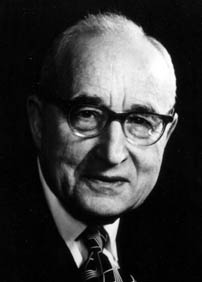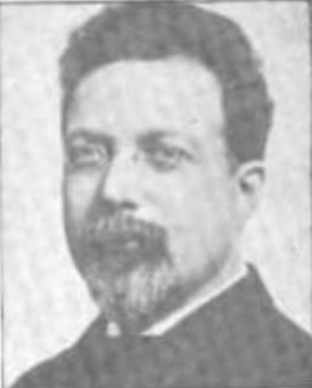Related Research Articles
The Union for Reform Judaism (URJ), formerly known as the Union of American Hebrew Congregations (UAHC) until 2003, founded in 1873 by Rabbi Isaac Mayer Wise, is the congregational arm of Reform Judaism in North America. The other two arms established by Rabbi Wise are the Hebrew Union College-Jewish Institute of Religion and the Central Conference of American Rabbis. The current president of the URJ is Rabbi Rick Jacobs.

The Hebrew Union College – Jewish Institute of Religion is a Jewish seminary with three locations in the United States and one location in Jerusalem. It is the oldest extant Jewish seminary in the Americas and the main seminary for training rabbis, cantors, educators and communal workers in Reform Judaism. HUC-JIR has campuses in Cincinnati, Ohio, New York City, Los Angeles, and Jerusalem. The Jerusalem campus is the only seminary in Israel for training Reform Jewish clergy.
African-American Jews are people who are both African American and Jewish. African-American Jews may be either Jewish from birth or converts to Judaism. Many African-American Jews are of mixed heritage, having both non-Jewish African-American and non-Black Jewish ancestors. Many African-American Jews identify as Jews of color, but some do not. Black Jews from Africa, such as the Beta Israel from Ethiopia, may or may not identify as African-American Jews.

Isaac Mayer Wise was an American Reform rabbi, editor, and author. At his death he was called "the foremost rabbi in America".

Jacob Rader Marcus was a scholar of Jewish history and a Reform rabbi.
Reform Zionism, also known as Progressive Zionism, is the ideology of the Zionist arm of the Reform or Progressive branch of Judaism. The Association of Reform Zionists of America is the American Reform movement's Zionist organization. Their mission “endeavors to make Israel fundamental to the sacred lives and Jewish identity of Reform Jews. As a Zionist organization, the association champions activities that further enhance Israel as a pluralistic, just and democratic Jewish state.” In Israel, Reform Zionism is associated with the Israel Movement for Progressive Judaism.

The history of the Jews in Cincinnati occupies a prominent place in the development of Jewish secular and religious life in the United States. Cincinnati is not only the oldest Jewish community west of the Allegheny Mountains but has also been an institutional center of American Reform Judaism for more than a century. The Israelite, the oldest American Jewish newspaper still (2019) being published, began publication in Cincinnati in 1854.
The Pittsburgh Platform is a pivotal 1885 document in the history of the American Reform Movement in Judaism that called for Jews to adopt a modern approach to the practice of their faith. While it was never formally adopted by the Union of American Hebrew Congregations (UAHC) or the Central Conference of American Rabbis founded four years after its release, and several rabbis who remained associated with Reform in its wake attempted to distance themselves from it, the platform exerted great influence over the movement in the next fifty years, and still influences some Reform Jews who hold classicist views to this day.

Sabato Morais was an Italian-American rabbi of Portuguese descent, leader of Mikveh Israel Synagogue in Philadelphia, pioneer of Italian Jewish Studies in America, and founder of the Jewish Theological Seminary, which initially acted as a center of education for Orthodox Rabbis.
The Rockdale Temple, formally Kahal Kadosh Bene Israel, is an Ashkenazi Reform Jewish congregation and synagogue, located in Amberley Village, a suburb of Cincinnati, Ohio, in the United States. Founded in 1824, it is the oldest Jewish congregation west of the Allegheny Mountains, the oldest congregation in Ohio, the second oldest Ashkenazi congregation in the United States and one of the oldest synagogues in the United States.

Joseph Krauskopf was a prominent American Jewish rabbi, author, leader of Reform Judaism, founder of the National Farm School, and long-time (1887–1923) rabbi at Reform Congregation Keneseth Israel (KI), the oldest reform synagogue in Philadelphia which under Krauskopf, became the largest reform congregation in the nation.
Capers C. Funnye Jr. is an African-American Conservative rabbi, who leads the 200-member Beth Shalom B'nai Zaken Ethiopian Hebrew Congregation of Chicago, Illinois, assisted by rabbis Avraham Ben Israel and Joshua V. Salter.

David Philipson was an American Reform rabbi, orator, and author.
The American Israelite is an English-language Jewish newspaper published weekly in Cincinnati, Ohio. Founded in 1854 as The Israelite and assuming its present name in 1874, it is the longest-running English-language Jewish newspaper still published in the United States and the second longest-running Jewish newspaper in the world, after the London-based Jewish Chronicle.

Minhag America is a siddur created in 1857 by Rabbi Isaac Mayer Wise that was intended to address conflict between sides supporting and opposing traditionalism in early Reform Judaism in the United States. The prayer book was accepted by the majority of Reform congregations in the western and southern United States.
Har Sinai – Oheb Shalom Congregation is a Reform Jewish congregation and synagogue located at 7310 Park Heights Avenue, in Pikesville, Baltimore County, Maryland, in the United States. Established in 1842 in Baltimore and known as Har Sinai Congregation, and in 1853 near Camden Yards as Temple Oheb Shalom, the two congregations merged in 2019 and is the oldest Reform congregation in the United States that has used the same prayer rite since its inception.

Reform Congregation Keneseth Israel, abbreviated as KI, is a Reform Jewish congregation and synagogue located at 8339 Old York Road, Elkins Park, just outside the city of Philadelphia, Pennsylvania, in the United States. Founded in Philadelphia in 1847, it is the sixth oldest Reform congregation in the United States, and, by 1900, it was one of the largest Reform congregations in the United States. The synagogue was at a number of locations in the city before building a large structure on North Broad Street in 1891, until 1956 when it moved north of the city to suburban Elkins Park.
Henry Berkowitz was a Reform rabbi, educator and author.
Jacob Ezekiel was an American merchant and leader of the Jewish community in antebellum Richmond, Virginia. In Cincinnati after the Civil War, he was for many years Secretary of the Board of Hebrew Union College. He was a charter member of B'nai B'rith, the first national Jewish organization in the United States. According to his son Moses, he was a good writer and a well-read man, "a man of cultivation", who possessed the complete works of Maimonides. He was the father of Moses Jacob Ezekiel (1844–1917), who became America's most famous sculptor.
Temple Israel is the oldest of eleven Progressive synagogues in South Africa. It is a provincial heritage site, built in the Art Deco style by architect Hermann Kallenbach. It is located in the Johannesburg suburb of Hillbrow. It is an affiliate of the South African Union for Progressive Judaism (SAUPJ), which is part of the World Union for Progressive Judaism (WUPJ).
References
- 1 2 3 4 5 Appel, John J. (February 1966). "The Trefa Banquet". Commentary. Archived from the original on 2011-06-09. Retrieved 2011-08-31.
- 1 2 3 4 5 6 7 8 9 Sussman, Lance J. (2005). "The Myth of the Trefa Banquet: American Culinary Culture and the Radicalization of Food Policy in American Reform Judaism" (PDF). American Jewish Archives Journal. Vol. 57, no. 1–2. pp. 29–52. Archived (PDF) from the original on 2014-10-17. Retrieved 2014-12-07.
- 1 2 "Cincinnati History - Mt Adams Incline". c. 2018. Archived from the original on March 26, 2019. Retrieved March 22, 2019.
- 1 2 3 Sarna, Jonathan D. (2005). American Judaism: A History . Yale University Press. p. 145. ISBN 0300109768.
- ↑ "Jewish Jollification". Cincinnati Enquirer . July 12, 1883. p. 4. Archived from the original on March 27, 2019. Retrieved March 26, 2019.
- ↑ "At Home". Fort Wayne Daily Gazette . July 15, 1883. p. 15. Archived from the original on June 7, 2019. Retrieved May 10, 2019.
- ↑ "The First Ripe Fruits Plucked From the Tree of Knowledge Planted on Our Virgin Soil". The American Israelite . July 20, 1883. p. 5. Archived from the original on March 27, 2019. Retrieved March 26, 2019.
- ↑ "American Hebrews". The Inter Ocean (Chicago, Illinois). July 13, 1883. p. 5. Archived from the original on March 30, 2019. Retrieved March 30, 2019.
- ↑ "Hebrew Congregations". Memphis Daily Appeal (Memphis, Tennessee). July 13, 1883. p. 1. Archived from the original on March 30, 2019. Retrieved March 30, 2019.
- ↑ "The Union of the Hebrew Congregations". Weekly Times-Democrat . New Orleans, Louisiana. July 14, 1883. Archived from the original on March 30, 2019. Retrieved March 30, 2019.
- ↑ Philipson, David (1941). My Life as an American Jew. Cincinnati: Kidd. p. 23.
- ↑ Morais, S[abato] (July 20, 1884). "The Trefa Jewish Banquet". The American Hebrew . Archived from the original on March 30, 2019. Retrieved March 30, 2019.
- ↑ Wise, Isaac (August 3, 1883). "Untitled editorial". The American Israelite . p. 4. Archived from the original on June 7, 2019. Retrieved May 10, 2019.
- ↑ "Current Comment". Hartford Courant . (Also in the Morning News (Wilmington, Delaware), August 9, 1883, p. 4.). August 6, 1883. p. 2. Archived from the original on June 7, 2019. Retrieved May 10, 2019.
{{cite news}}: CS1 maint: others (link) - ↑ "Table Talk". Buffalo Commercial. August 7, 1883. p. 2. Archived from the original on June 7, 2019. Retrieved May 10, 2019.
- ↑ "The Union of American Hebrew Congregations". American Israelite . January 10, 1907. p. 4. Archived from the original on June 7, 2019. Retrieved May 10, 2019.
- ↑ Goldsmith, Ashley. Jews Feast On Forbidden Foods To Remember Rabbis' Radical Banquet Archived 2019-04-02 at the Wayback Machine : NPR, January 24, 2018